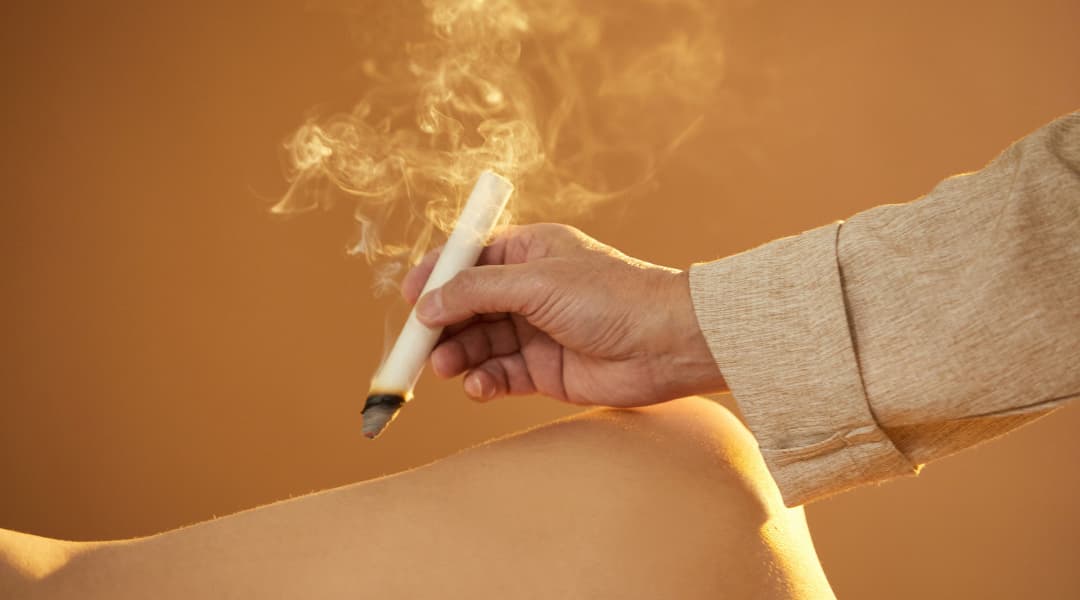Moxibustion in Summer: A Natural Way to Boost Immunity and Vitality
Moxibustion is not only a traditional healing method in Chinese medicine, but also a popular health maintenance practice for many modern households. As a folk saying goes, “With three years of mugwort at home, there’s no need for a doctor.” This reflects the value of moxibustion in daily wellness.
Interestingly, summer is actually considered the best season for moxibustion. Some may wonder—since moxibustion is a form of heat therapy, wouldn’t adding more heat in hot weather be harmful?
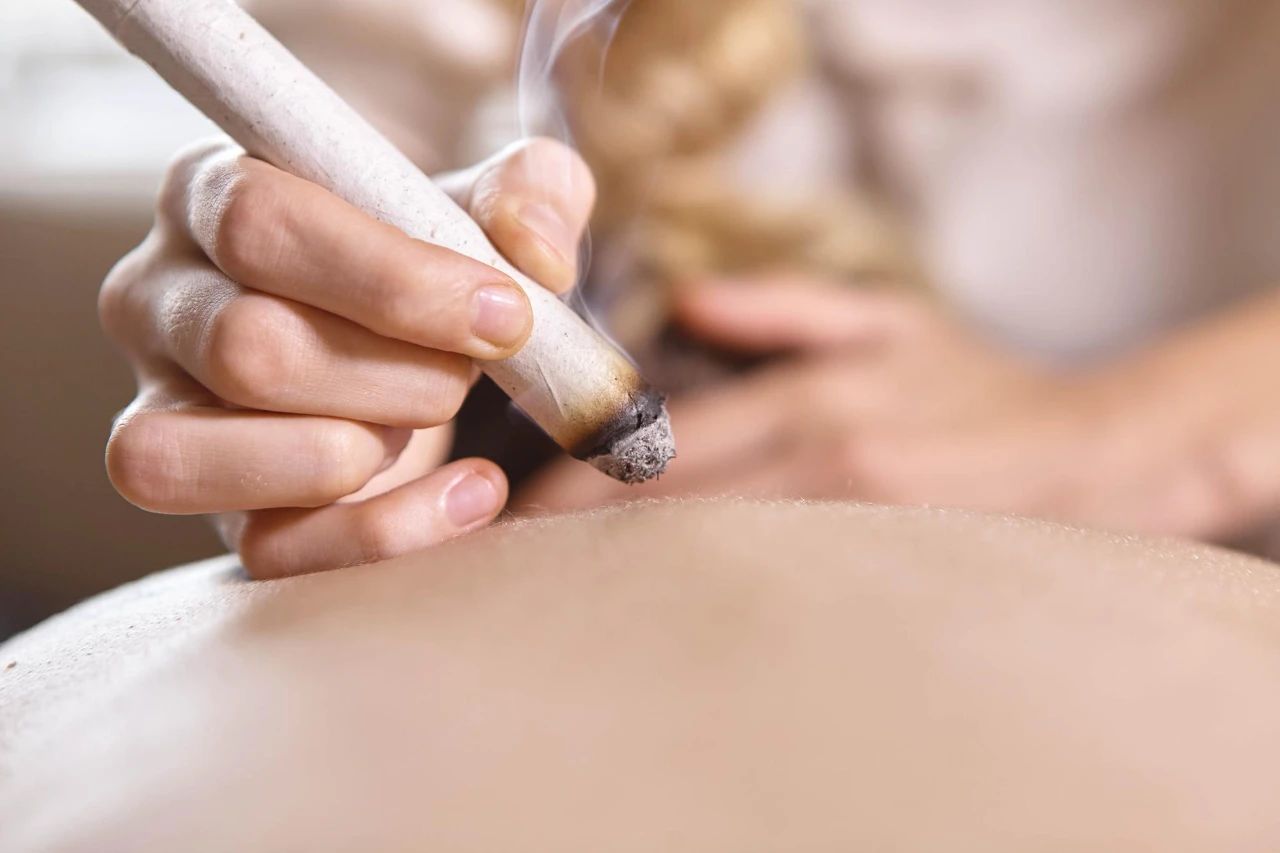
The Principle of “Treating Winter Diseases in Summer”
When people think of “treating winter diseases in summer” (dong bing xia zhi), they often think of Sanfu Plasters (Sanfu Tie). However, moxibustion is also a highly effective method based on the same principle. Summer offers ideal conditions: less clothing makes acupuncture points easier to access, and the high temperature increases skin sensitivity, reducing the risk of burns. In contrast, moxibustion during winter involves frequent dressing and undressing, which could expose individuals—especially those with deficient or cold constitutions—to external pathogens.
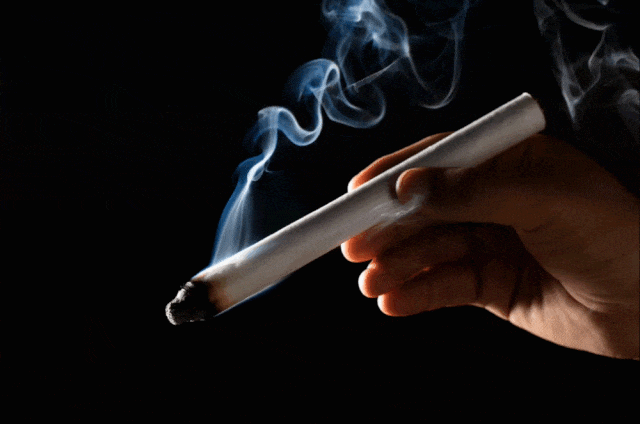
Moxibustion uses the heat of burning mugwort (Artemisia argyi) to stimulate specific acupuncture points (acupoints) and meridians on the body. Mugwort is known for its pungent, warm nature and bitter flavor. It has the effects of warming the meridians, dispelling cold, regulating menstruation, and stopping bleeding.
Through thermal stimulation, moxibustion dilates local capillaries, improves blood and lymphatic circulation, promotes absorption of medicinal compounds, and helps the body eliminate inflammation, adhesions, exudates, and hematomas. It also reduces nervous system excitability, providing calming and analgesic effects.
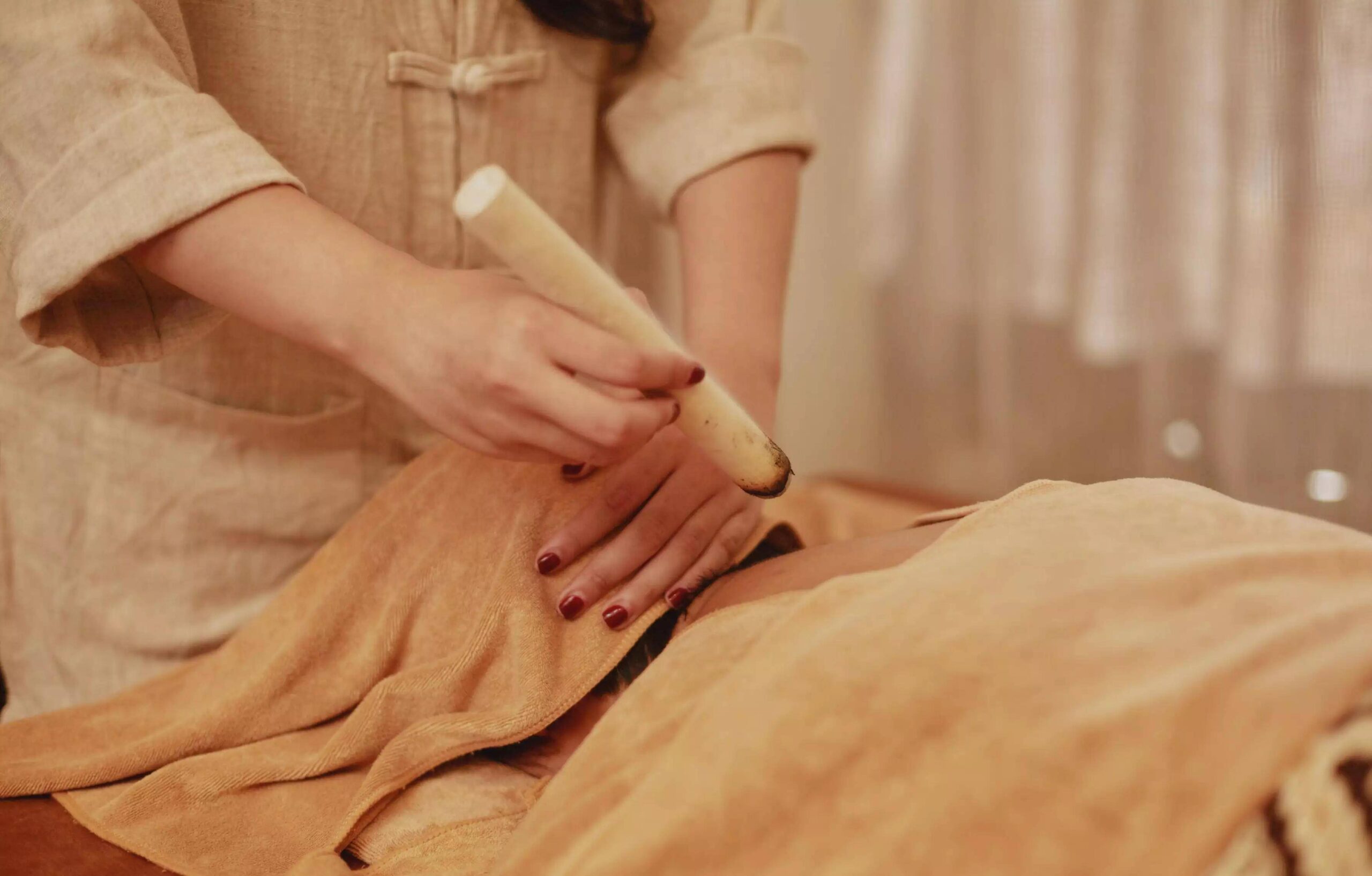
Who Benefits Most from Summer Moxibustion?
Summer moxibustion is particularly suitable for the elderly, children, and individuals in sub-health conditions. It is commonly used to address the following categories of disorders:
- Respiratory conditions: asthma, allergic rhinitis, bronchitis, chronic pharyngitis, recurrent respiratory infections, and emphysema.
- Digestive disorders: chronic gastritis, functional dyspepsia, peptic ulcers, chronic colitis.
- Rheumatic and musculoskeletal diseases: rheumatoid arthritis, ankylosing spondylitis, periarthritis of shoulder, cervical spondylosis, and lumbar strain. These fall under the TCM category of Bi syndrome, often aggravated by cold and dampness.
- Urogenital issues: such as cold-type dysmenorrhea, chronic pelvic inflammation, enuresis, and nocturia.
Three Essential Acupoints for Summer Moxibustion
Different age groups benefit from stimulating different acupoints in summer. Here are three key wellness acupoints frequently used for summer moxibustion:
1. Feishu (BL13) – For Those Under 35
Young people tend to be active outdoors, sweat a lot, and often consume cold drinks. These habits can weaken the lungs and lead to frequent colds. Strengthening lung Qi is therefore essential.
Feishu (BL13) is the back-shu point of the Lung and helps regulate the body’s protective Qi (Wei Qi), guarding against external pathogens. It is located 1.5 cun lateral to the lower border of the spinous process of the third thoracic vertebra (T3).
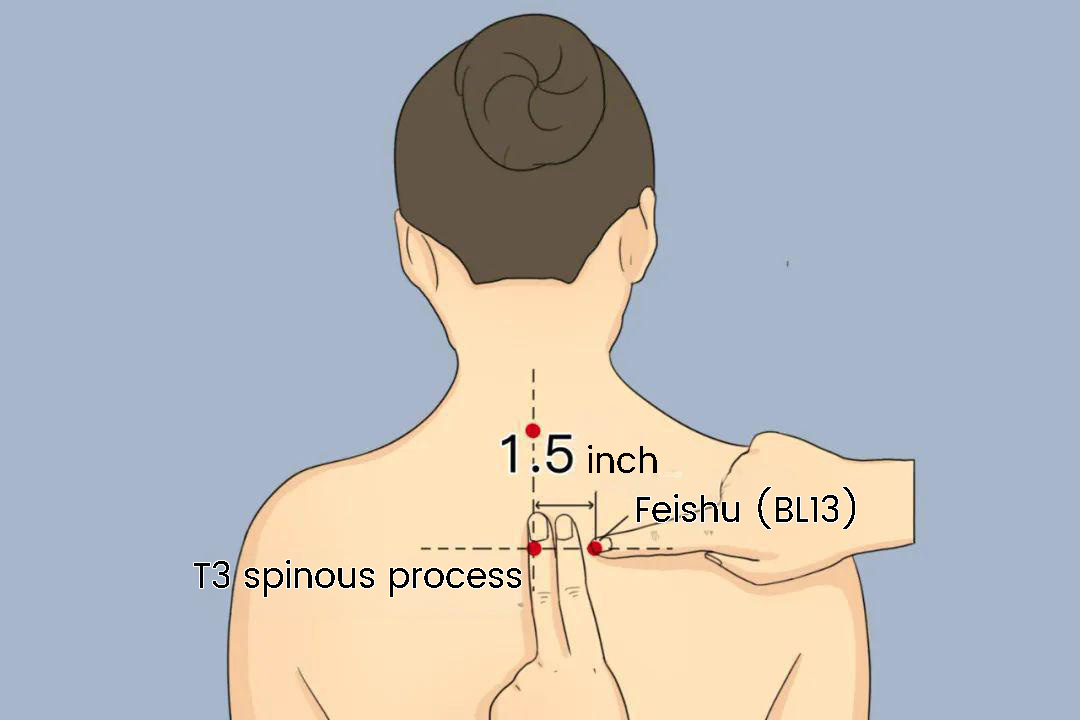
How to apply moxibustion: There is no strict frequency—apply moxibustion whenever you feel discomfort, signs of a cold, or after consuming cold food/drinks. The heat should be warm but tolerable. According to TCM practice, it’s beneficial to perform moxibustion on one’s lunar birthday (Sui Nian Zhuang Jiu). Children may receive about 5 minutes, while young adults may go up to 15 minutes. Another approach is seasonal moxibustion—twice a month, around the start of a new solar term.
2. Zusanli (ST36) – For Ages 35 to 60
By middle age, stress and lack of physical activity often damage the spleen and stomach, leading to internal dampness, obesity, high blood lipids, and fatty liver.
Stimulating Zusanli (ST36) helps regulate digestion, enhance nutrient absorption, and strengthen the body’s energy. It is located 3 cun below the lateral side of the knee (below the outer eye of the patella), about one finger-breadth from the anterior crest of the tibia.
How to apply: Follow the same moxibustion method as with Feishu (BL13).
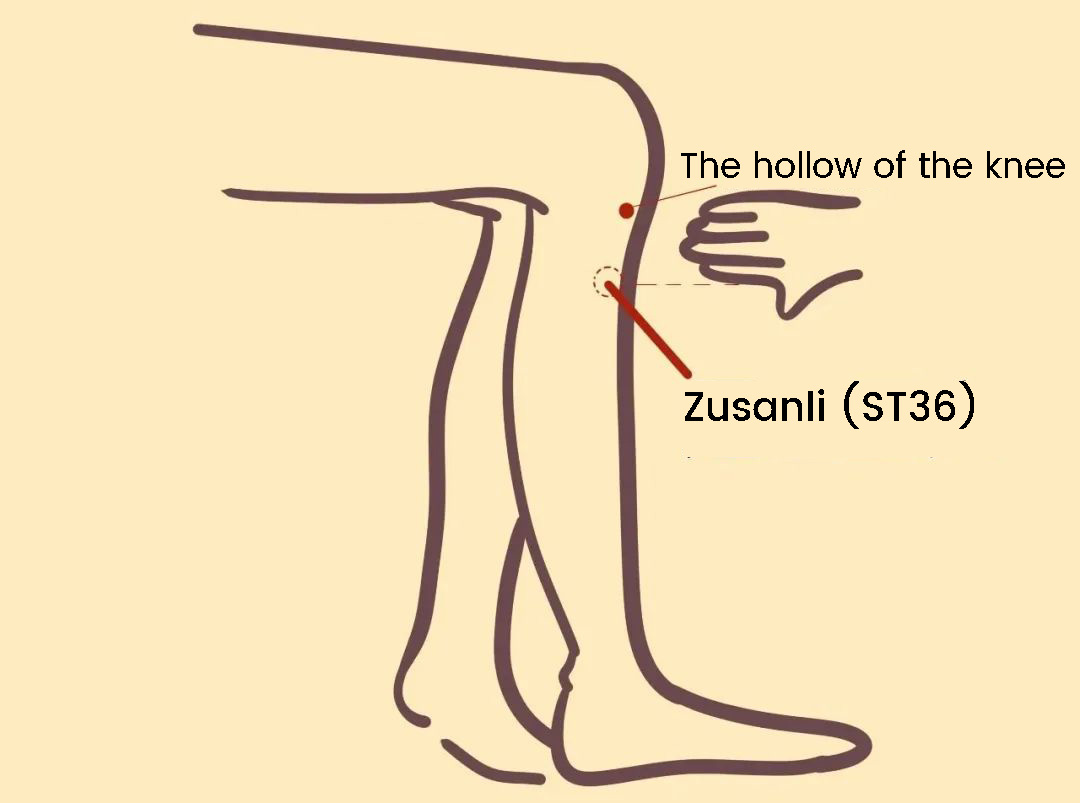
3. Guanyuan (CV4) – For People Over 60
As one enters old age, kidney energy (Shen Qi) weakens. This may manifest as lower back and knee pain, frequent nighttime urination, memory decline, fatigue, and hair loss.
Guanyuan (CV4) is located on the lower abdomen, 3 cun below the navel along the midline. It is a powerful point for replenishing essence, tonifying kidney Qi, and supporting overall vitality.
How to apply: Use the same method as with Feishu (BL13). Daily application is ideal—consistency is key.
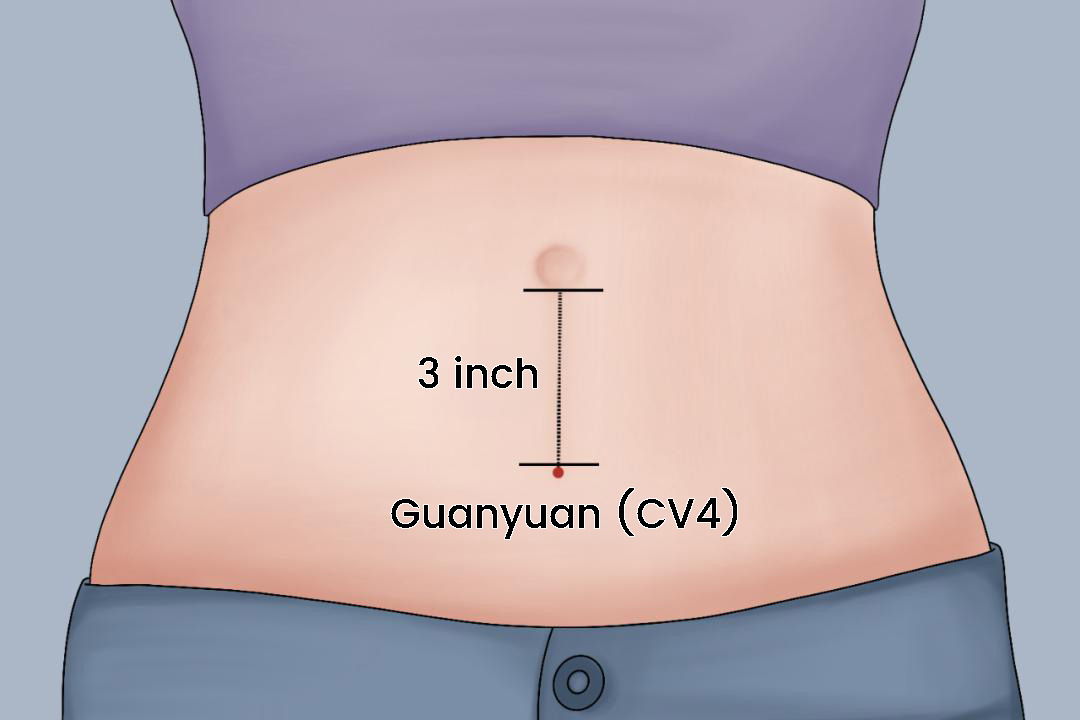
Home Moxibustion: What to Avoid
Moxibustion is not suitable for everyone. Use with caution in the following situations:
- When extremely full, hungry, thirsty, angry, scared, or emotionally unstable.
- For individuals with excess syndromes, heat syndromes, or Yin-deficiency fever.
- Pregnant women should avoid moxibustion on the lower abdomen and lower back.
- Avoid scar-inducing moxibustion on the face, chest, over major arteries, or on joints.
- Avoid or use with caution on sensitive acupoints such as Yamen (GV15), Fengfu (GV16), Tianzhu (BL10), Toulinqi (GB15), Touwei (ST8), Sizhukong (SJ23), Zan Zhu (BL2), Jingming (BL1), Yingxiang (LI20), Renying (ST9), Yuanye (GB22), and Ruzhong (ST17).
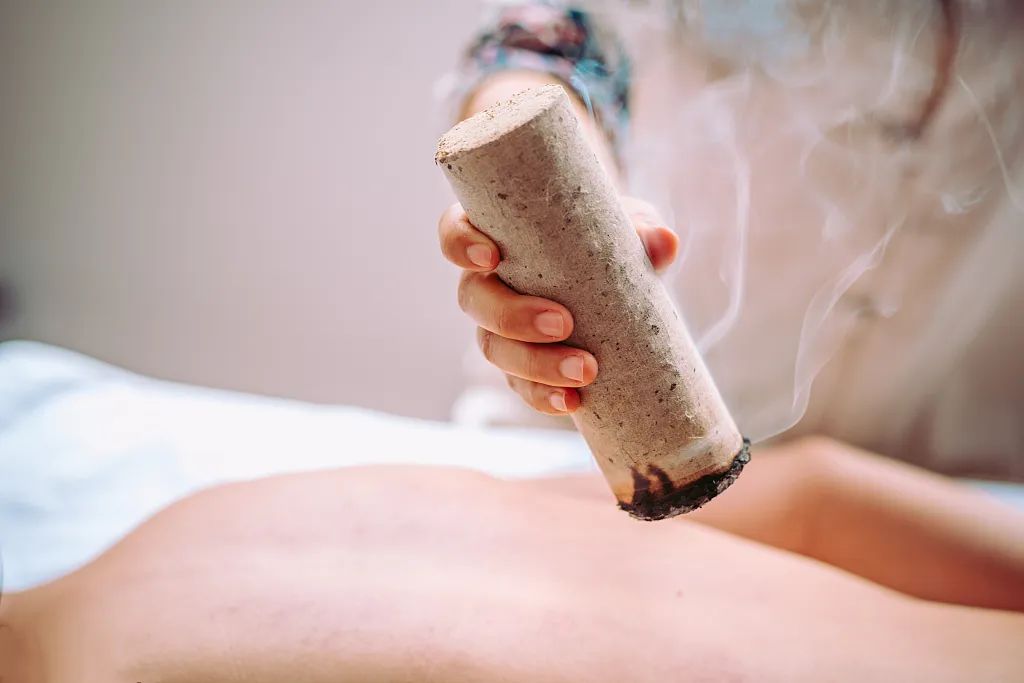
Tips for Safe and Effective Moxibustion
- If you feel intense burning, stop or move the moxa stick further away from the skin to prevent burns.
- If using direct moxibustion (scarring moxibustion), be cautious of infection.
- The general order of moxibustion should follow: back → chest/abdomen → head → limbs.
- For home practice, always consult a qualified acupuncturist and follow professional guidance.

